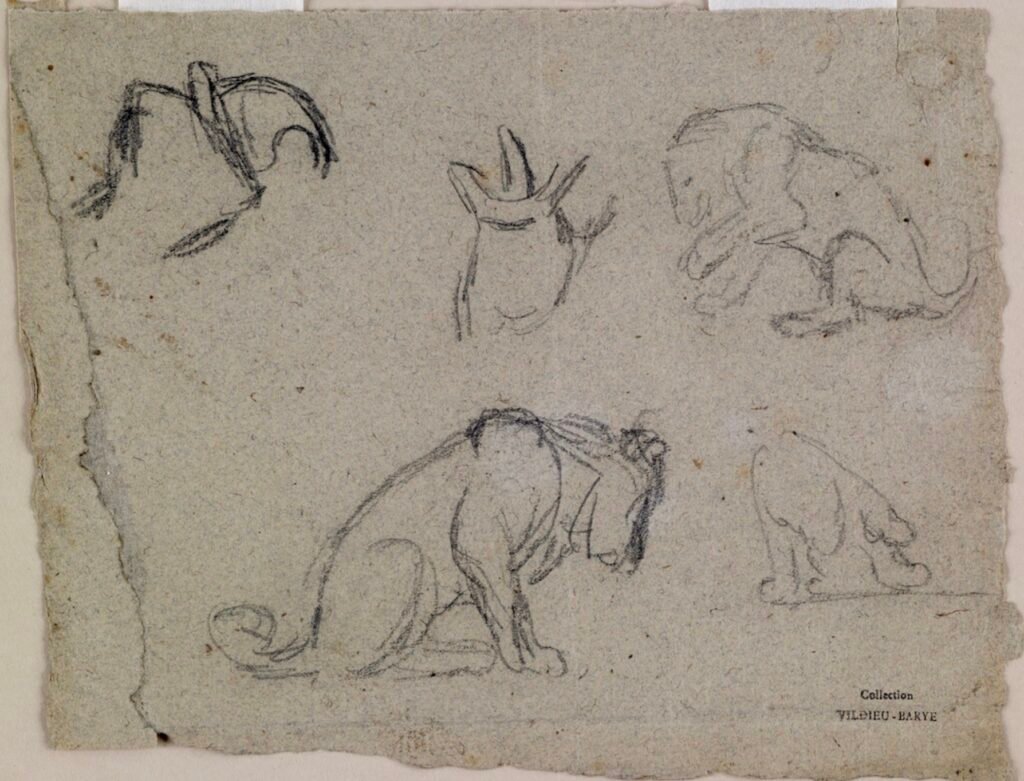The Walters Art Museum will open a new exhibition entitled “Art and Process: Drawings, Paintings, and Sculptures from the 19th-Century Collection” on Oct. 24, 2024. The exhibition will run through March 9, 2025.
The collection explores the creative process by showing the preliminary sketches and finished works of the museum’s permanent collection of 19th-century French art. “Drawings and sketches record choices made by an artist, however, preparatory studies often don’t survive, and those that do are rarely exhibited due to their light sensitivity,” reads the Walters’ press release.
What does survive will be on display and give viewers a window into the artist’s mind and process through 30 works on paper (pastel, graphite, charcoal, and watercolor), 23 oil paintings, and works in bronze, porcelain, and terracotta. Some of the more recognizable names from the 19th-century that will be shown include Antoine-Louis Barye (French, 1795–1875), Jean-François Millet (French, 1814–1875), Camille Pissarro (French, 1831–1903), and Alfred Sisley (French and British, 1839–1899).
“Opportunities for museum-goers to witness the artistic process—which is sometimes shrouded in such mystery—are rare. Allowing visitors the chance to explore it and better understand what an artist was potentially thinking during creation has the ability to spark creativity in all of us,” said Gina Borromeo, Interim Co-Director. “In that way, Art and Process humanizes methods of making, illustrating how artists endeavored to refine their compositions and technique. We hope this exhibition adds depth to the visitor experience, creating a place to connect not just with the art on view, but to better understand the people behind the works as well.”
The exhibition displays myriad approaches to developing a finished piece of art, demonstrating that there is no such thing as one right way. Some creatives work on detailed preliminary sketches and finish a final product quickly, others barely sketched or did preliminary work at all, creating from memory or directly from a subject in front of them. Viewers will also see examples of artists who refined their work for periods that lasted as long as a decade or more.
“These artworks remind us that when we encounter a display in a museum, we see only the endpoint in a dynamic process—one that may have been long and involved many twists and turns,” said Jo Briggs, Jennie Walters Delano Curator of 18th- and 19th-Century Art. “Through trial and error, the artist may have made dozens of changes along the way, resulting in a final product that looks nothing like their initial idea. This context helps the viewer see these works as more fluid and less static, proving that art is a living, breathing process—not just a painting on a wall or a sculpture on a plinth.”
“Art and Process” presents visitors with the unique opportunity to view “Two Students in the Life Room of the Heatherley School of Fine Art” (1902) by Nellie Joshua (British, 1877-1960), which shows a rare depiction of women in an art education environment in the late 19th century. This sparks a conversation related to access for women to education and art during that time period, when women were forbidden from attending most fine arts schools because their participation in “life drawing” (drawing undraped models) was considered immoral.
“Heatherley, a private art school in central London, admitted female students on equal terms with their male counterparts,” reads the press release. “Joshua’s painting of two female figures sitting in the ‘life room’ at the school is, therefore, a comment on a woman’s right to access an artistic education and, therefore, the profession.”
The Walters Art Museum is located at 600 N. Charles Street, Baltimore, MD. Admission to the museum is free. For more information on the “Art and Process: Drawings, Paintings, and Sculptures from the 19th-Century Collection,” click this link.






